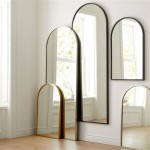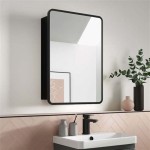How to Mirror Your MacBook Screen to an LG TV
Mirroring a MacBook screen to an LG TV can significantly enhance productivity, improve the viewing experience for movies or presentations, or facilitate collaborative work. This article details the various methods for accomplishing this, focusing on ease of use, compatibility, and potential limitations.
Understanding Compatibility and Requirements
Before attempting to mirror a MacBook to an LG TV, understanding the compatibility factors is crucial. Both devices must support the necessary protocols or have the appropriate hardware adapters. Modern LG TVs typically support either AirPlay 2 or the Miracast standard. AirPlay 2 is Apple's proprietary wireless mirroring technology, providing seamless integration with Apple devices. Miracast is a more open standard, allowing devices from different manufacturers to mirror screens wirelessly.
The MacBook's operating system version also plays a significant role. Older macOS versions might lack native support for AirPlay 2, requiring alternative mirroring solutions. Checking the specifications of both the MacBook and the LG TV will reveal which mirroring technologies are supported. In the absence of native wireless support, a wired connection via an HDMI adapter is a reliable alternative.
Furthermore, network connectivity must be considered for wireless mirroring. A stable Wi-Fi network is essential for smooth and lag-free screen mirroring. Both the MacBook and the LG TV should be connected to the same network for optimal performance. Interference from other wireless devices can impact the mirroring quality, potentially resulting in buffering or disconnections.
Using AirPlay 2 for Wireless Mirroring
AirPlay 2 is the most straightforward method for mirroring a MacBook screen to an LG TV if both devices support it. This technology offers a seamless and integrated experience, allowing for wireless audio and video transmission. Prior to initiating the mirroring process, ensuring that AirPlay 2 is enabled on the LG TV is necessary.
To enable AirPlay 2 on an LG TV, navigate to the TV's settings menu. The specific location of the AirPlay settings may vary depending on the TV model and software version, but it is typically found under the "Connections," "Network," or "Apple AirPlay" sections. Once located, ensure that AirPlay is toggled on and that the desired settings, such as password protection and access restrictions, are configured.
On the MacBook, initiating AirPlay mirroring involves accessing the Control Center. Clicking on the Control Center icon in the menu bar (usually located in the top right corner of the screen) will reveal a list of available options. Look for the "Screen Mirroring" option and click on it. A list of available AirPlay-compatible devices, including the LG TV, will appear.
Selecting the LG TV from the list will prompt a passcode to appear on the TV screen. This passcode must be entered on the MacBook to establish the connection. Once the passcode is entered correctly, the MacBook screen will be mirrored to the LG TV. Additional settings, such as adjusting the mirroring quality and audio output, can be configured within the Screen Mirroring menu.
To stop mirroring, simply revisit the Screen Mirroring menu in the Control Center and select "Stop AirPlay." This will disconnect the MacBook from the LG TV and terminate the screen mirroring session.
Utilizing HDMI for a Wired Connection
In situations where wireless mirroring is not feasible or desired, using an HDMI cable provides a reliable and high-quality alternative. This method eliminates the need for a Wi-Fi network and ensures a stable connection, making it suitable for situations where latency is a concern, such as gaming or professional presentations.
Most MacBooks, especially older models, do not have a standard HDMI port. Therefore, an adapter is typically required to connect the MacBook to the LG TV. The specific type of adapter needed depends on the MacBook's ports. Common adapter types include USB-C to HDMI and Mini DisplayPort to HDMI. Selecting an adapter that supports the desired resolution and refresh rate is crucial for optimal video quality.
Once the appropriate adapter is acquired, connect it to the MacBook's corresponding port. Then, connect one end of the HDMI cable to the adapter and the other end to an available HDMI port on the LG TV. Ensure that the TV is set to the correct HDMI input channel corresponding to the port used for the connection.
The MacBook should automatically detect the connected display and extend or mirror its screen accordingly. If the display is not detected automatically, access the System Preferences on the MacBook and navigate to the "Displays" section. Click on the "Detect Displays" button to force the MacBook to recognize the connected LG TV.
Within the Displays settings, various options for configuring the display mirroring or extending can be adjusted. The "Arrangement" tab allows for arranging the displays in relation to each other, determining the direction of mouse movement between screens. The "Display" tab allows for adjusting the resolution, refresh rate, and color profile of the external display.
For mirroring, selecting the "Mirror Displays" checkbox will duplicate the MacBook screen onto the LG TV. For extending the display, unchecking the "Mirror Displays" box will allow the LG TV to function as a second monitor, expanding the available workspace.
Adjusting further settings on the LG TV, such as video modes and aspect ratios, might be needed for optimal viewing experience. Using the proper settings will ensure the content displayed is clear and not stretched or distorted.
Troubleshooting Common Mirroring Issues
Despite the relative simplicity of the mirroring process, users may encounter various issues that prevent successful screen sharing. Addressing these issues requires systematic troubleshooting, starting with basic checks and progressing to more advanced solutions.
A common issue is the inability of the MacBook to detect the LG TV as an available AirPlay device or external display. Confirming that both devices are connected to the same Wi-Fi network is a primary step for AirPlay issues. For HDMI connections, ensuring that the cable is securely connected and the TV is set to the correct input source is important.
Firewall settings on either the MacBook or the network router can sometimes interfere with AirPlay communication. Disabling the firewall temporarily can help determine if it is the source of the problem. If the firewall is the issue, configuring it to allow AirPlay traffic is essential.
Software glitches can also cause mirroring problems. Restarting both the MacBook and the LG TV can often resolve temporary software issues. Ensuring that both devices are running the latest software versions is crucial for optimal performance and compatibility.
For wireless mirroring, network congestion can lead to intermittent disconnections or poor video quality. Minimizing interference from other wireless devices and ensuring a strong Wi-Fi signal can improve the mirroring experience. Switching to a less congested Wi-Fi channel can also help.
If using an HDMI connection, the issue might stem from the adapter or cable. Testing with a different adapter or cable can help identify whether there's a hardware problem. If the adapter doesn't support the resolution of the monitor, it can cause either a failure of display or low quality video.
Finally, resetting the LG TV to its factory settings can sometimes resolve persistent mirroring issues. This should be done as a last resort, as it will erase all custom settings and preferences.

How To Mirror Mac Macbook Pro Lg Tv

How To Mirror Mac Macbook Pro Lg Tv

How To Mirror Mac Lg Tv

Lg Tv Macbook Screen Share Casting App Free Trial

How To Connect Macbook Lg Tv

How To Make Screen Mirroring Full On Macbook Airbeamtv

How To Mirror 2024 Macbook Tv Monitor
Cannot Mirror My Macos Screen To Lg Tv Ai Apple Community

Best Ways For Screen Sharing Mac To Lg Tv
Lg Tv How To Screen Share On Your Usa Support








